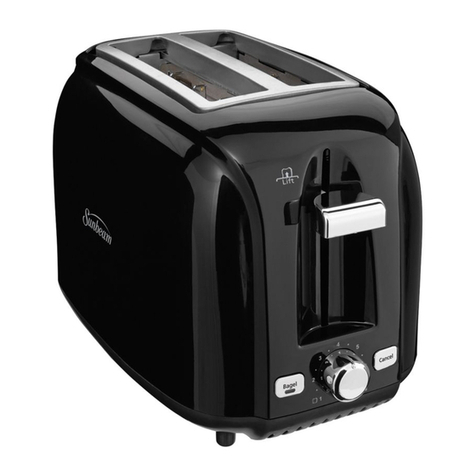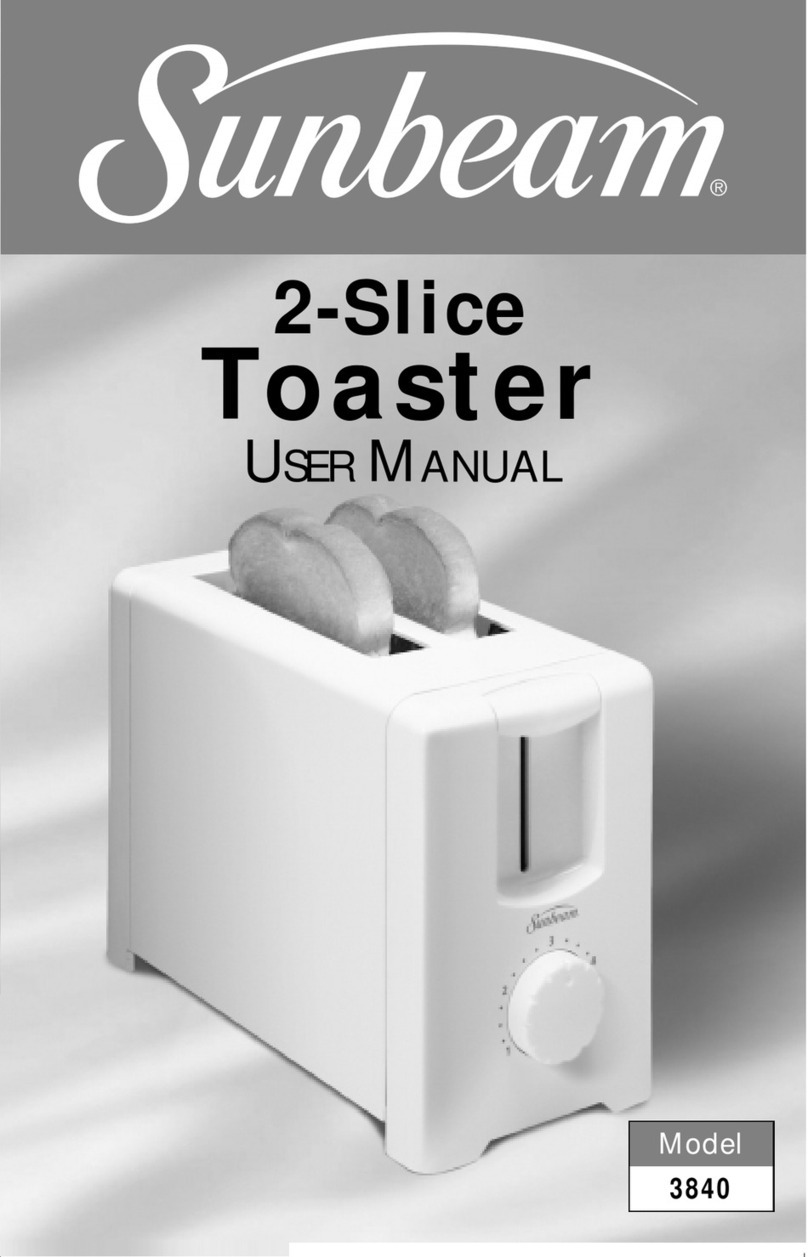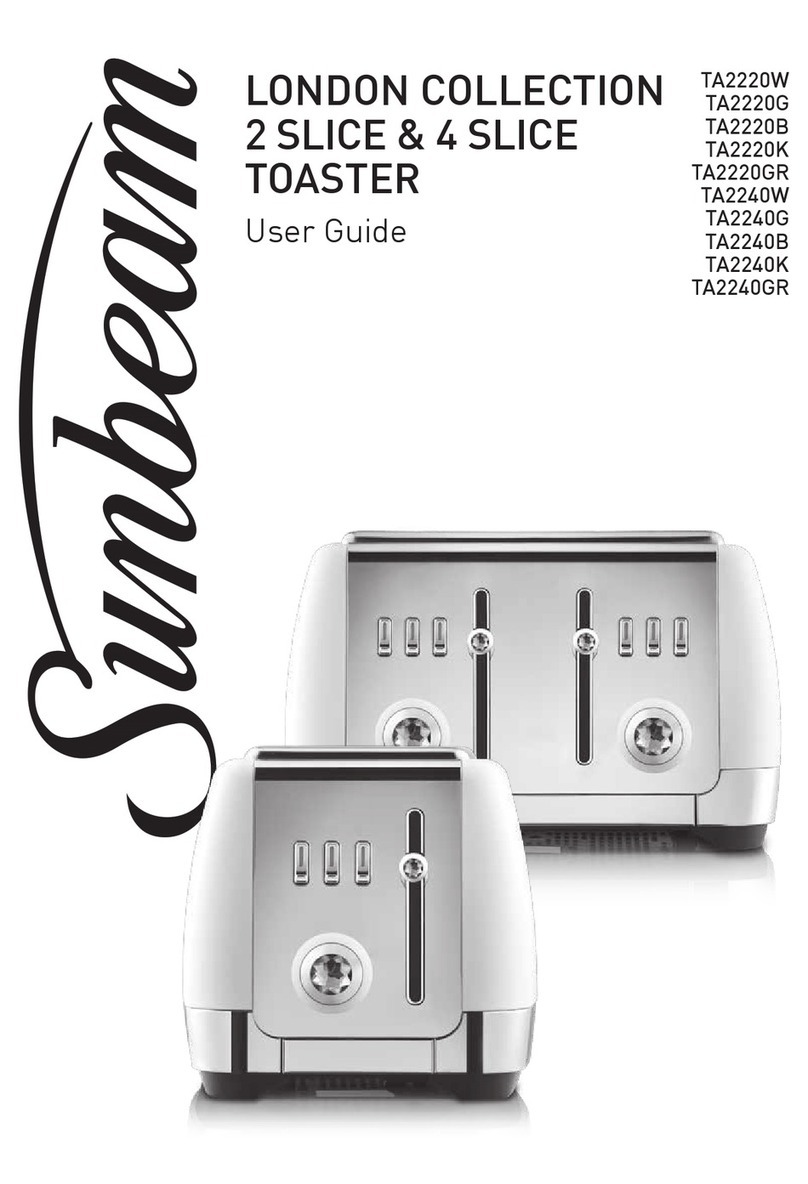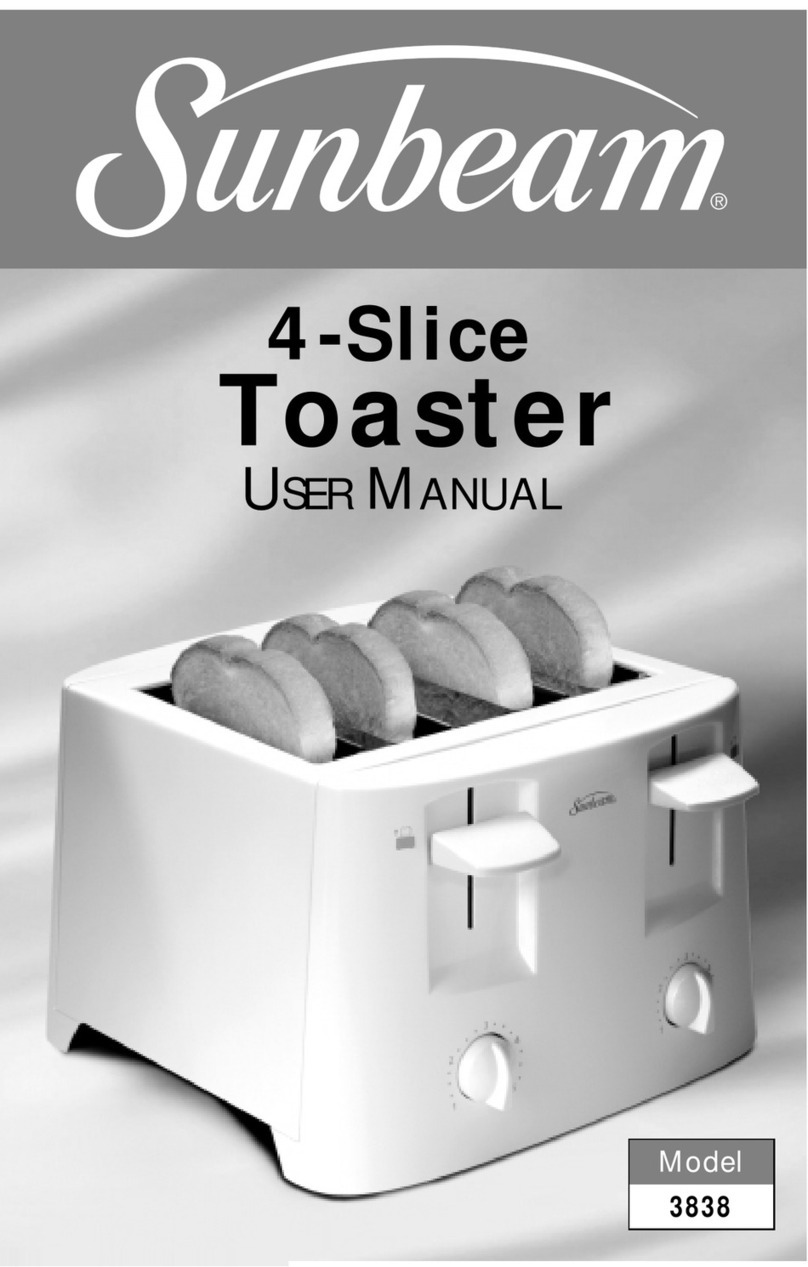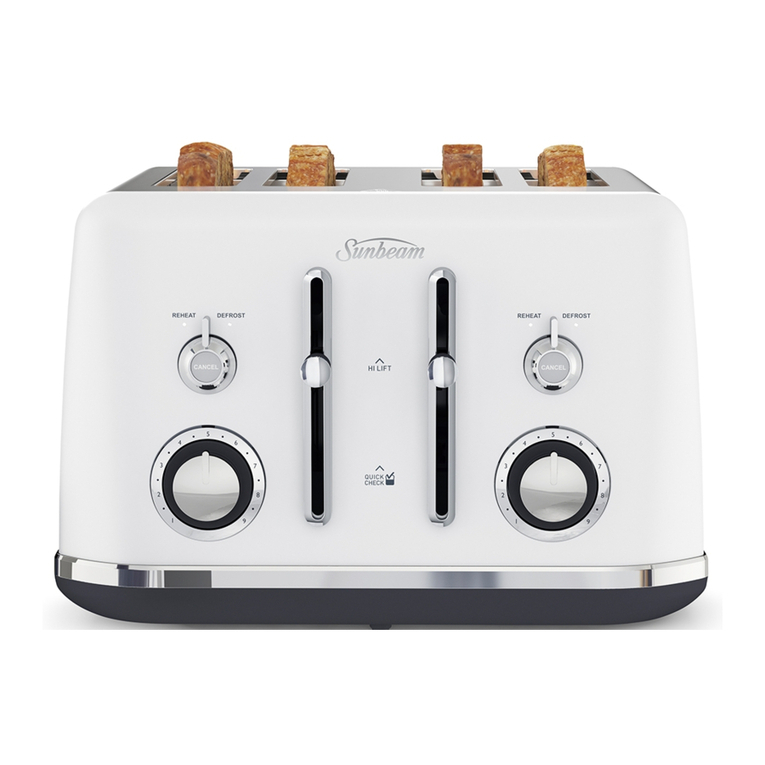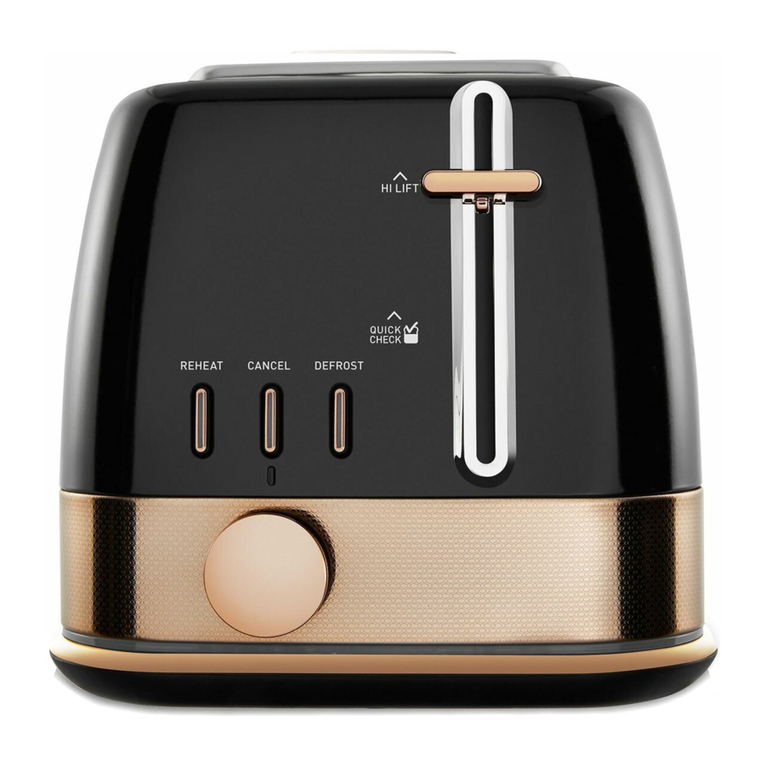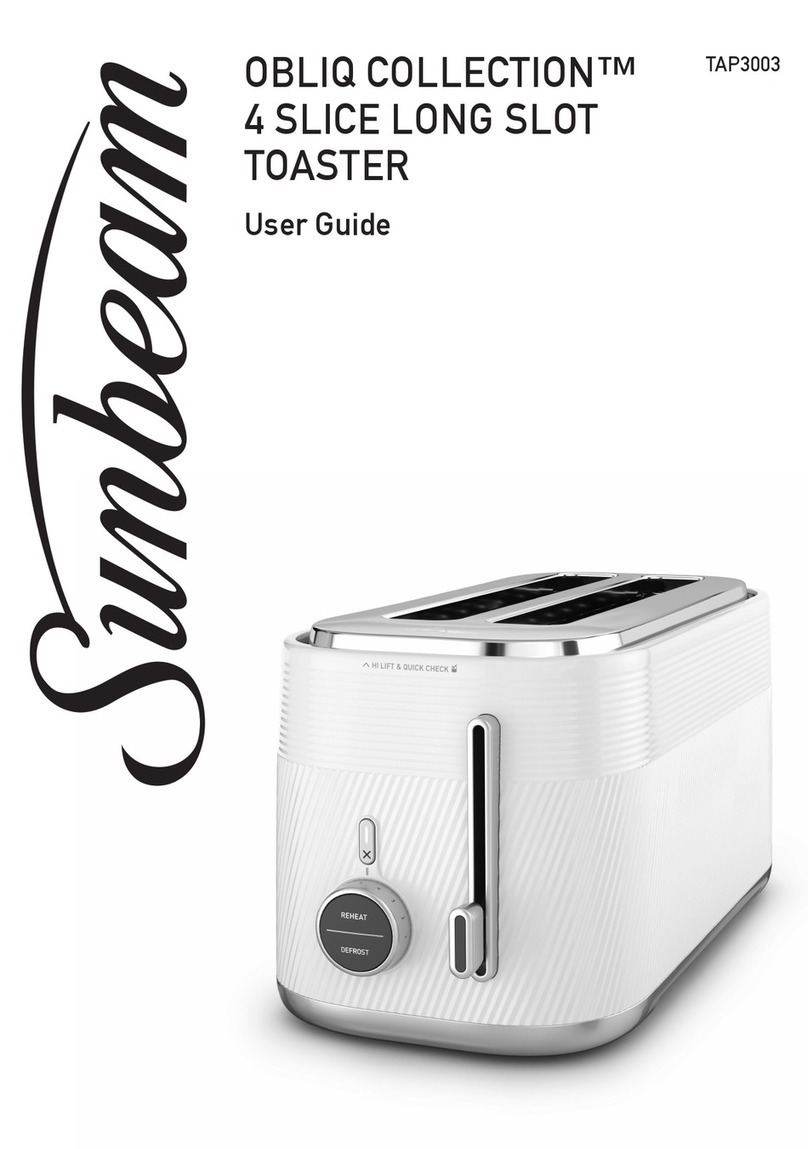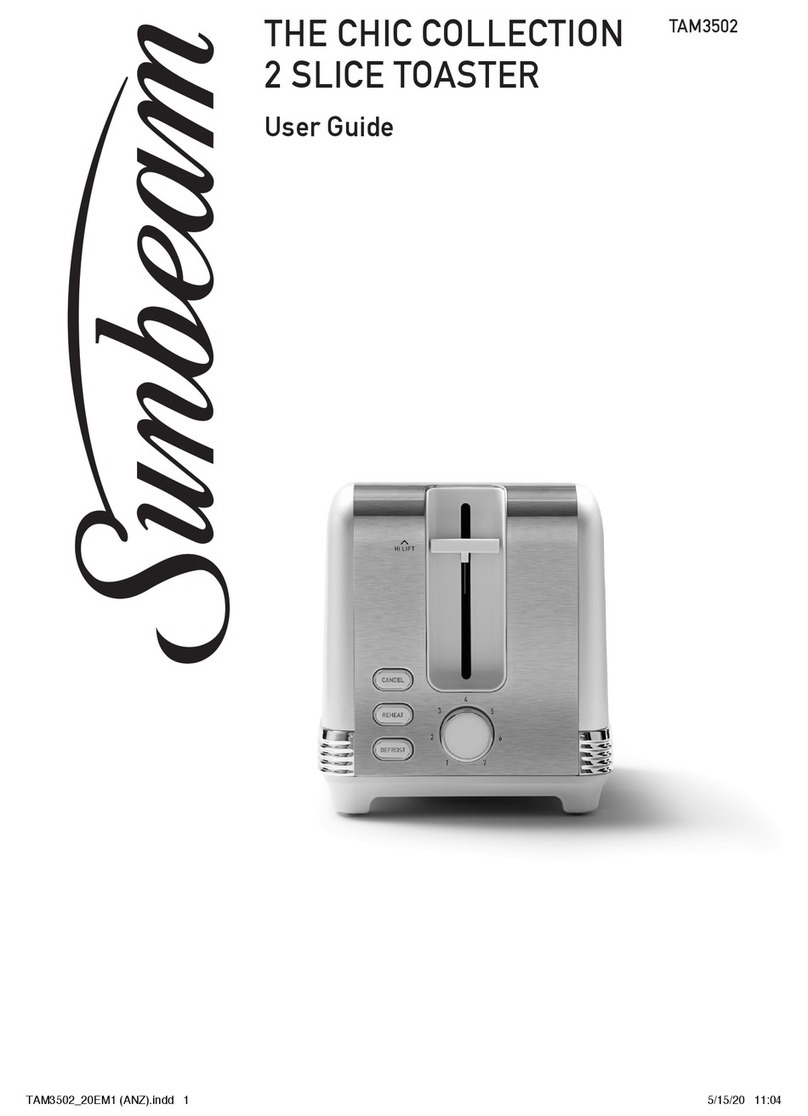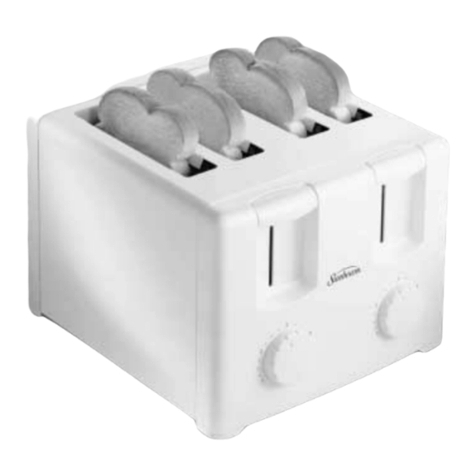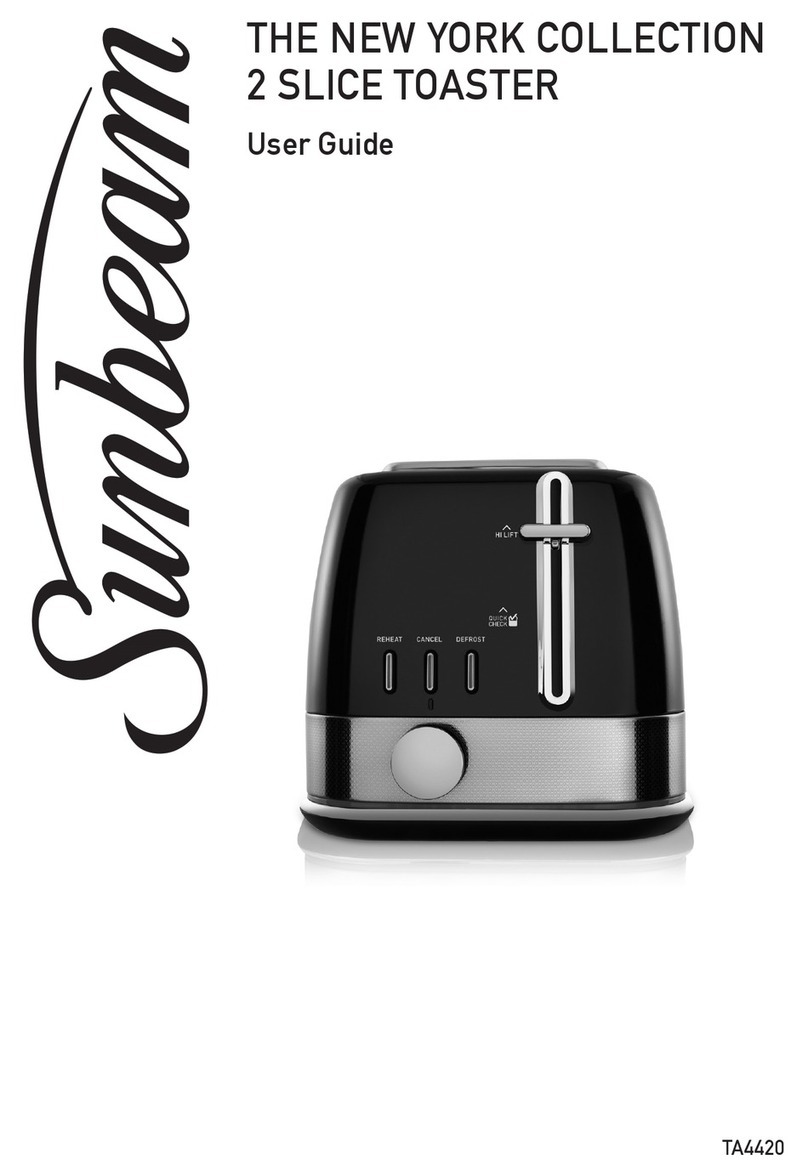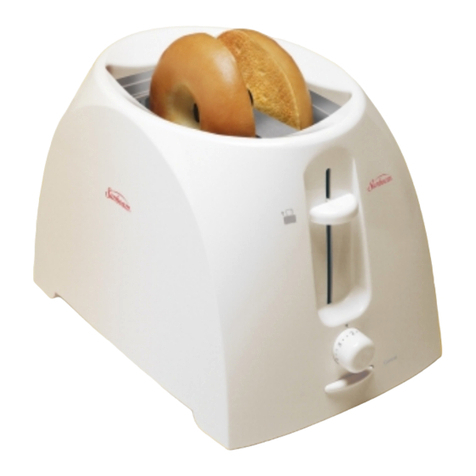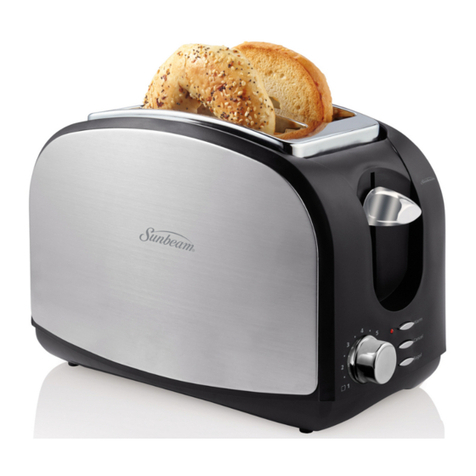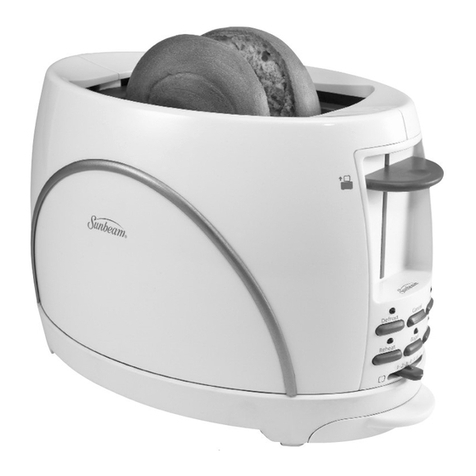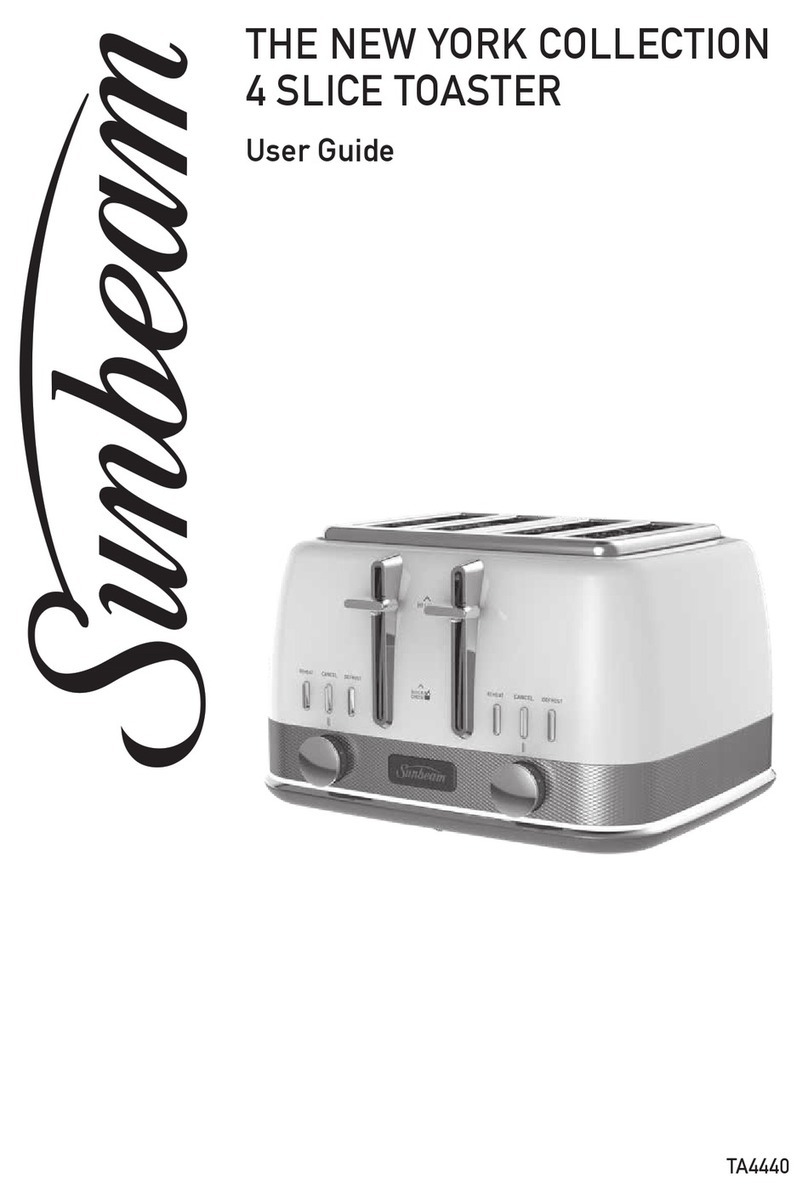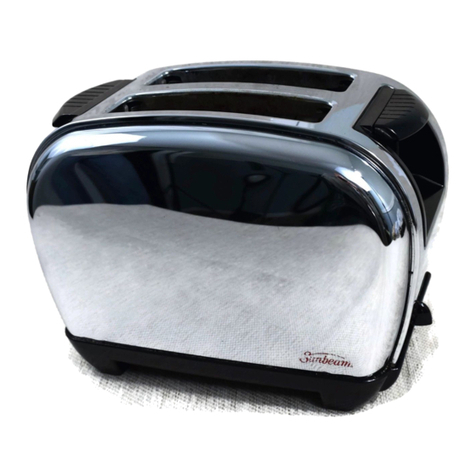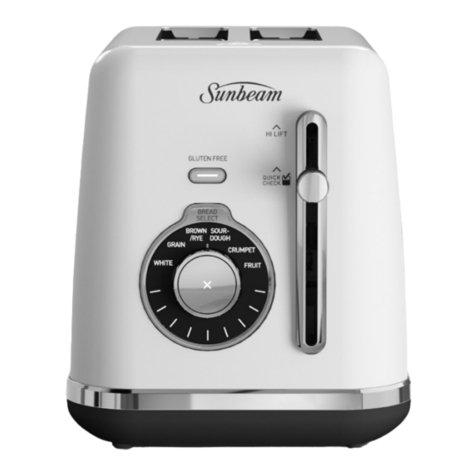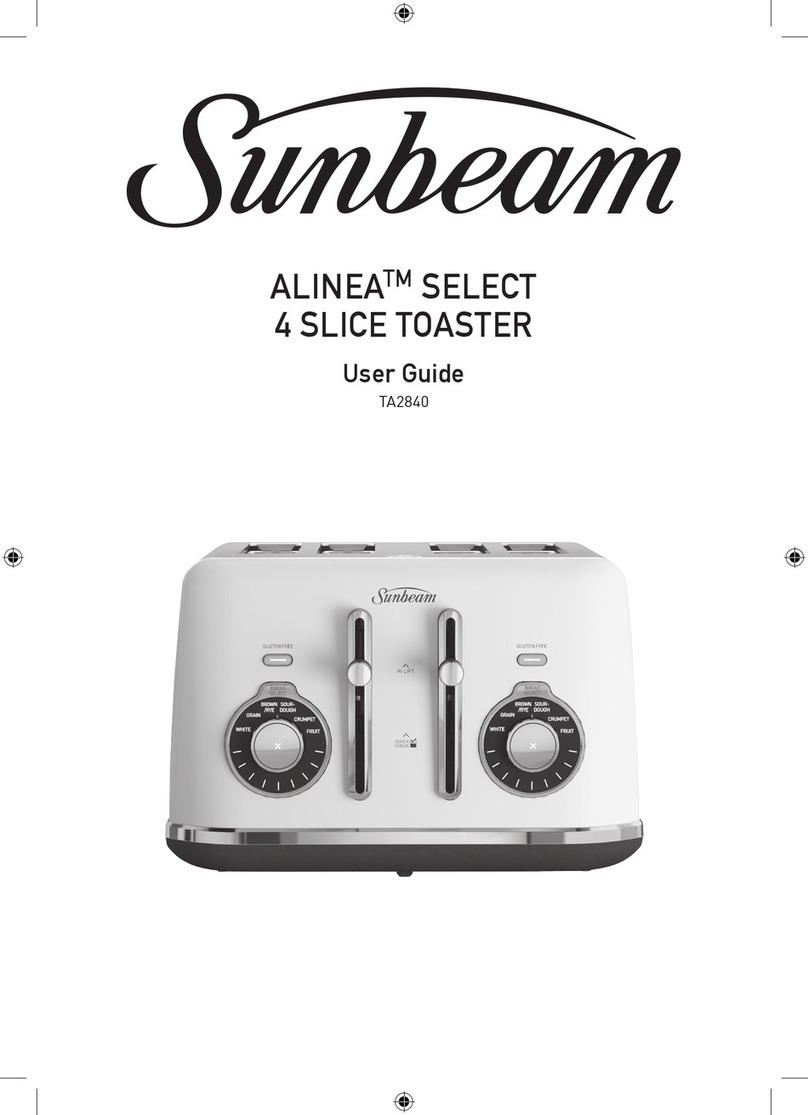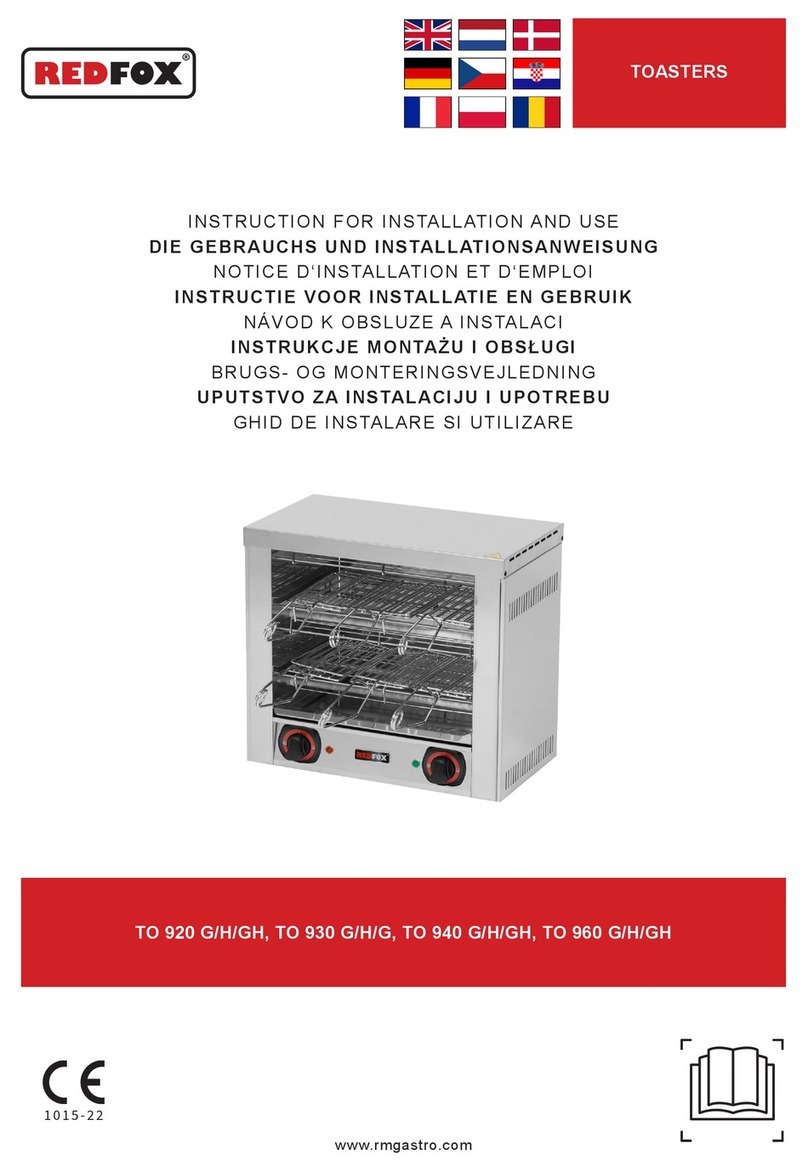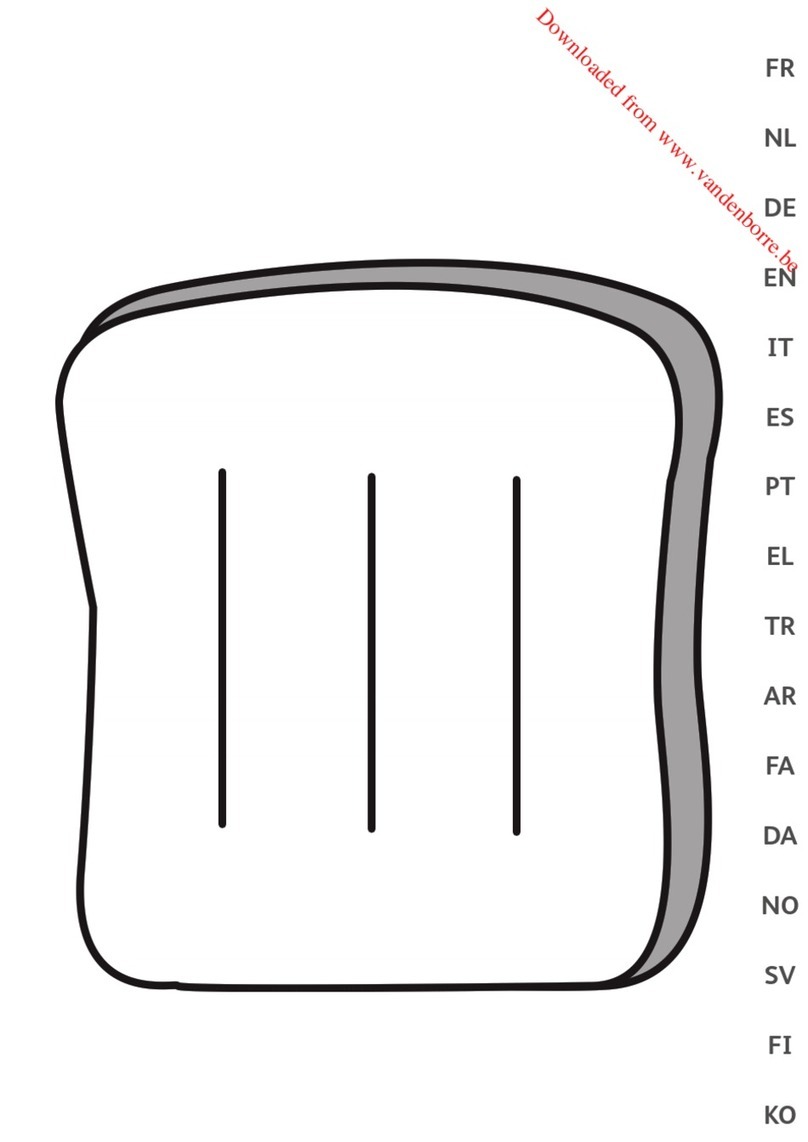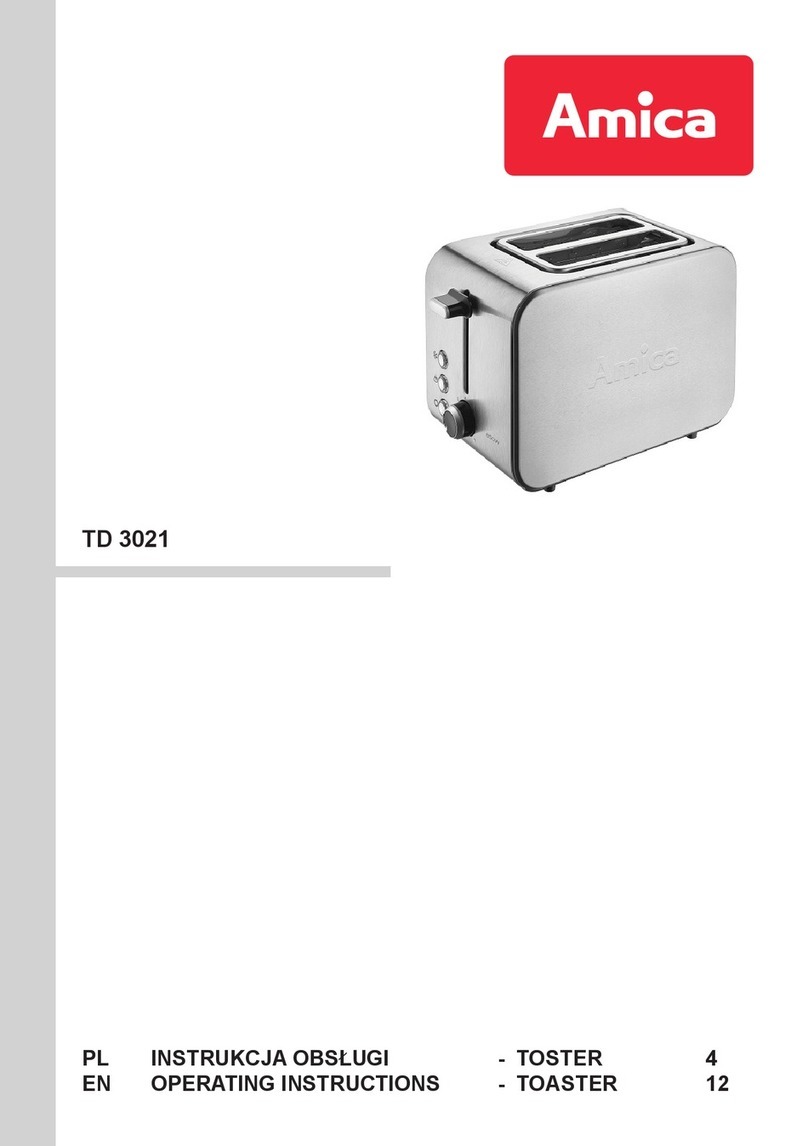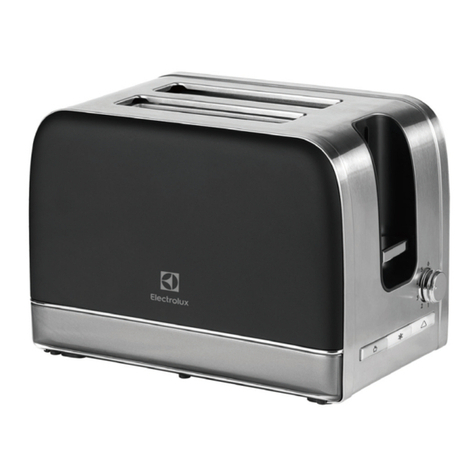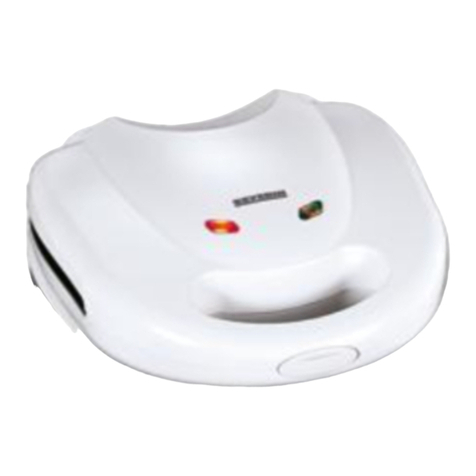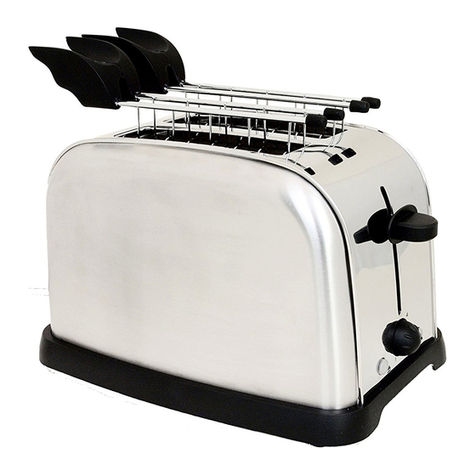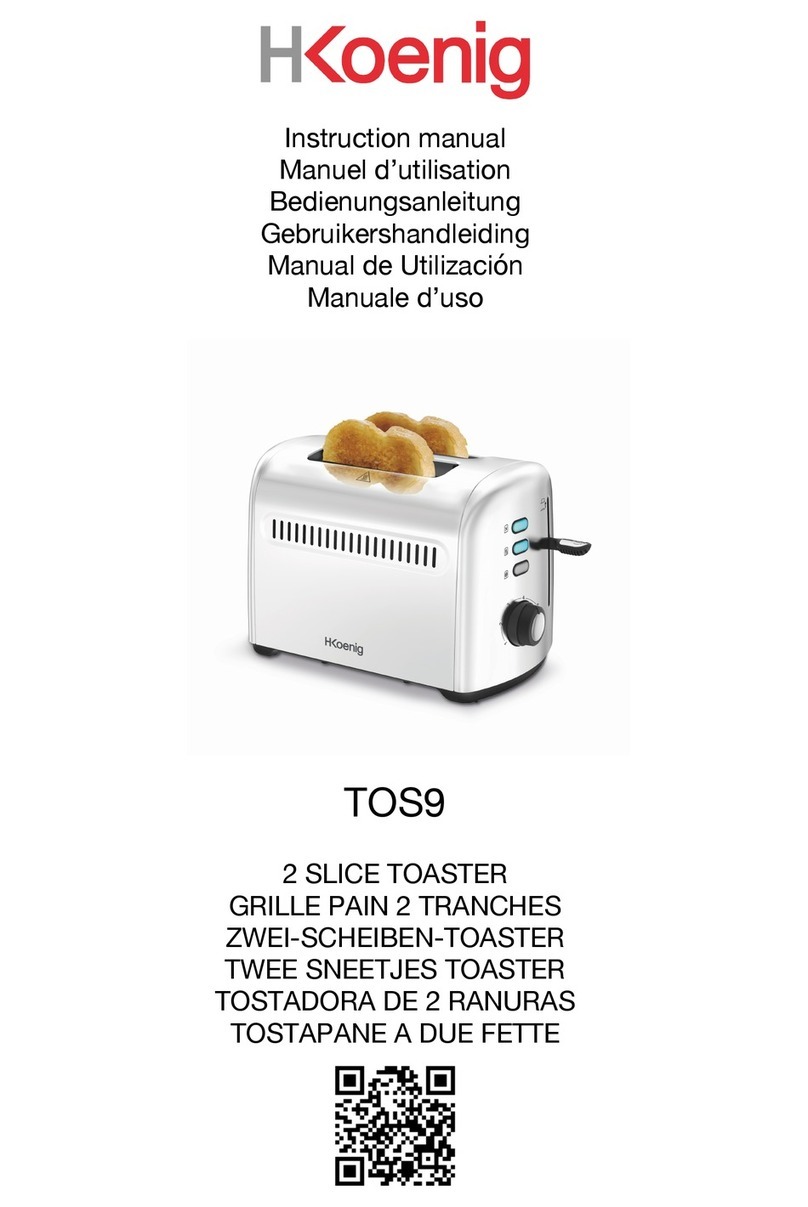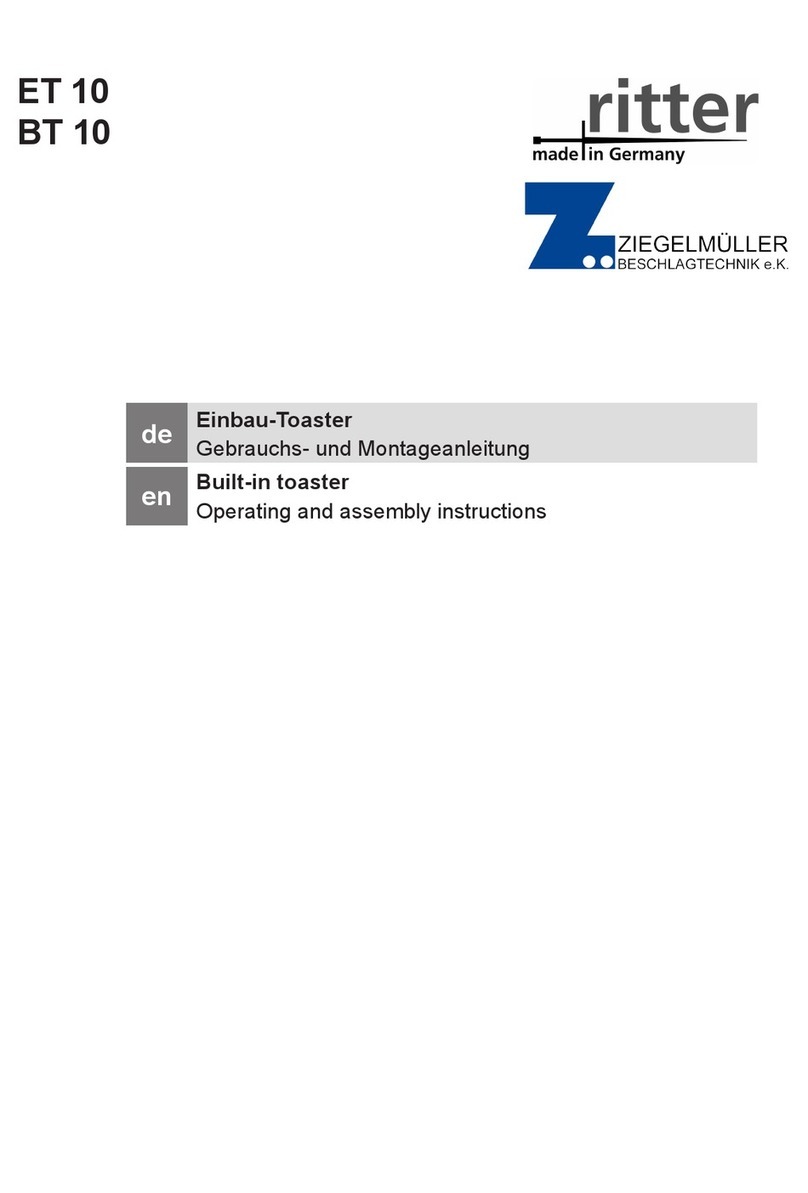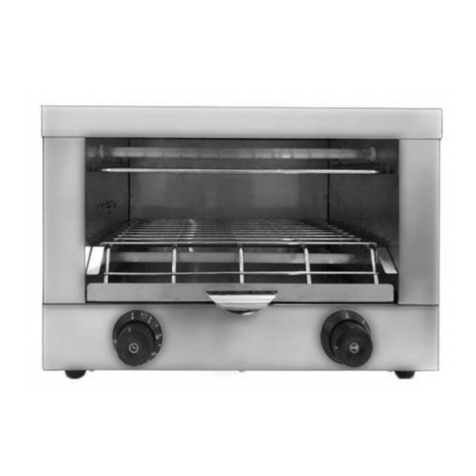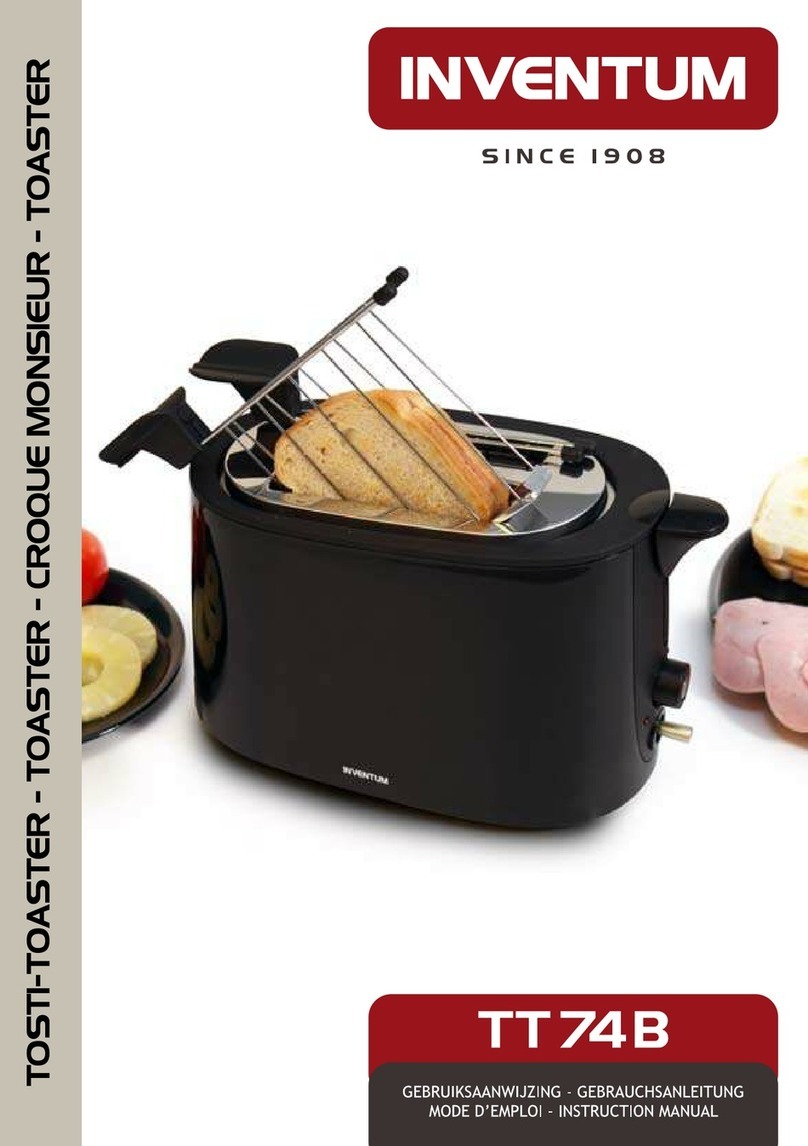
-3-
HOW THE TOASTER OPERATES
Put two slices of bread in the Toaster. The slice in the slot marked "One Slice" will
depress the Trip Lever, causing the Trigger Lever Assembly to close the contact points.
The elements will then heat up, and the expansion of the Center Element wire will allow
the Bread Lifter Assembly to go down slowly under its own weight.
When the bread is toasted, the heat radiated from the outer surface of the bread, in the
slot marked "One Slice", will cause the Thermostatic Blade to snap to "off" position,
causing the contact points to open. Then, as the elements cool, the wire in the Center
Element will contract, and force the Lift Lever Depression Bar down, causing movement of
the Lift Lever Assembly, which forces the Bread Lifter Assembly to slowly raise the
toasted bread.
OPERATING PRINCIPLES
Uniformity of toasting, under varying conditions, such as bread size, moisture content of
bread, voltage, and Toaster temperature, is obtained in this Toaster by having the
Radiant Control Thermostat respond to only the surface temperature of the slice of bread
being toasted. As the bread surface begins to toast, it will rise in temperature, and
this temperature, at every instant, bears aclose relationship to color at the same
instant. In this particular mechanism this surface temperature is measured by the heat
radiated (not conducted) from that surface to the Radiant Control Thermostat. The
Thermostat Assembly is unavoidably affected by atemperature rise due to the heating up
of its surroundings, but it is so designed as to properly compensate for this effect so
as to have anet response to only the heat radiated from the bread surface. Consistent
operation is assured because the Thermostat Blade operates with asnap action. Thus, it
is absolutely free of the effects of friction, since, in its snap motion, it encounters
no resistance, frictional or otherwise, until it moves freely for asufficient distance
to have many times more force available to do the work than is necessary.
Raising or lowering of the bread is obtained by making use of the energy of expansion and
contraction of the Center Element wire. Of course, this movement is very small and is
measured in thousandths of an inch, but more than adequate carriage movement is obtained
by asimple linkage which multiplies this movement approximately 175 times. Only the
movement in the lower range of temperature (below 1000 F.) is used for this purpose since
it is undesirable to apply stress to this wire while at or near the operating temperature
of approximately 1600 F.
The end elements are of unique design for the purpose of increasing the Toaster' s
efficiency. This design possesses much less heat capacity than an element of conventional
type, and consequently permits much faster toasting when the Toaster is cold.


